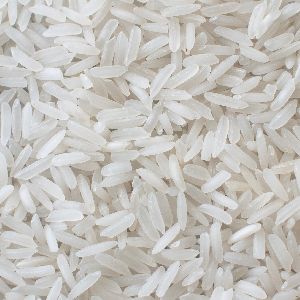
Jasmine Rice
45 Per Kilogram
EXPORT GRADE : The Jasmine rice that mixed with 8% or less other breeds of rice compared by the total weight and Jusmine must be 92% pure call for a common standard for Export or Domestic use. - The average length of the whole kernel without any broken part shall not less than 7.0 mm - Tht ratio of the average length against the average width of the whole kernel witout any broken part shall not be less than 3.0 mm - Long grain class 1 not less than 70.0%, the rest shall be Long grain class 2 - Of all these there may be Long grain class 3 not exceeding 5.0% - Whole kernels not less than 60.0% - Size of Broken having the length >=5.0 =8.0mm - Chalky kernels not exceeding 3.0% - White glutinous rice not exceeding 1.5% - Paddy not exceeding 5 grains per 1 kg. of rice - Extra well milled
...more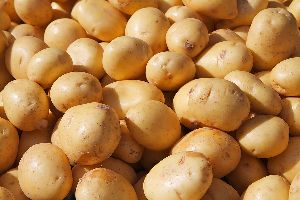
Potato
15 Per Ton
10 Ton (MOQ)
The humble potato has fallen in popularity in recent years, due to the interest in low-carb foods. However, the fiber, vitamins, minerals, and phytochemicals it provides can help ward off disease and benefit human health. Potatoes were first domesticated in the Andes in South America up to 10,000 years ago. Spanish explorers introduced them to Europe in the early 16th century. They are now the biggest vegetable crop in the United States (U.S.), where the average person eats 55 pounds, or 35 kilograms (kg) of potatoes every year. They are an important staple food in many countries around the world. This MNT Knowledge Center feature is part of a collection of articles on the health benefits of popular foods.
...more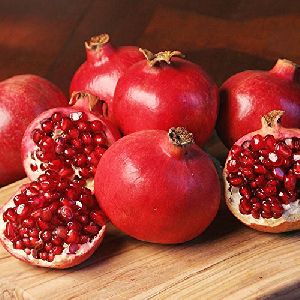
Pomegranate
40 Per Kilogram
25 Ton (MOQ)
The pomegranate, or Punica granatum, is a shrub that produces a red fruit (1). Categorized as a berry, the pomegranate fruit is about 5-12 cm (2-5 inches) in diameter. It is red, round and looks kind of like a red apple with a flower-shaped stem. The skin of the pomegranate is thick and inedible, but there are hundreds of edible seeds called arils within. The arils are what people eat, either raw or processed into pomegranate juice. Pomegranates have an impressive nutrient profile: One cup of arils (174 grams) contains (2): Fiber: 7 grams. Protein: 3 grams. Vitamin C: 30% of the RDA. Vitamin K: 36% of the RDA. Folate: 16% of the RDA. Potassium: 12% of the RDA. The pomegranate arils (seeds) are also very sweet, with one cup containing 24 grams of sugar, and 144 calories. However, where pomegranates really shine is in their content of powerful plant compounds, some of which have potent medicinal properties.
...more
peanut oil
90 Per Kilogram
25 Ton (MOQ)
Sweet, and flavorful peanut oil is organic edible oil obtained from pressing peanut kernels. Peanuts are believed to be originating in Central American region from where they spread to other parts of the world by Spanish explorers. Today, peanuts are widely cultivated as important oil seeds and a prime commercial crop in China, India, African nations, and the United States of America Physical characteristics of peanut oil Cold pressed peanut oil has deep yellow color with a pleasant nutty aroma and sweet taste. Refined oil features light-yellow and neutral taste. However, refining makes it virtually devoid of impurities and allergens. Its specific gravity @ 25 °C is 912-0.920, Iodine value-84�100, and saponification value-185�195. Peanut oil nutrition facts Peanut oil is high in energy; 100 g oil provides 884 calories. It is one of the cooking oils with a high smoke point; 450 °F which allows in setting oil at higher temperatures while deep-frying food items. Peanut oil composes a very good lipid profile. It has saturated, monounsaturated and polyunsaturated (SFA: MUFA: PUFA= 18: 49: 33) fats in healthy proportions. It is one of the stable cooking oils which has a long shelf life. Health benefits of Peanut oil Wonderfully pleasant, sweet-flavored peanut oil is low in saturated fats, free from cholesterol, contains essential fatty acid ( linoleic acid (omega-6)) making it as one of the healthiest cooking oils. Being a vegetable oil, it is a good source of plant sterols, especially �-sitosterol. The FDA has approved the following claim for phytosterols: "Foods containing at least 0.4 gram per serving of plant sterols, eaten twice a day with meals for a daily total intake of at least 0.8 gram, as part of a diet low in saturated fat and cholesterol, may reduce the risk of heart disease. "Phyto-sterols competitively inhibit cholesterol absorption in the gut and thereby can reduce cholesterol levels by 10% to 15%.
...more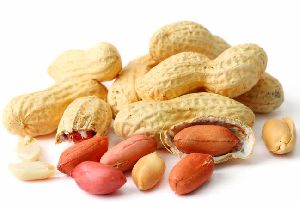
Peanut
50 Per Kilogram
Peanut or groundnut (Arachis hypogaea), is a species in the legume or "bean" family. The peanut was probably first domesticated and cultivated in the valleys of Paraguay. It is an annual herbaceous plant growing 30 to 50 cm (1.0 to 1.6 ft) tall. The leaves are opposite, pinnate with four leaflets (two opposite pairs; no terminal leaflet), each leaflet 1 to 7 cm (? to 2 inch) long and 1 to 3 cm (? to 1 inch) broad. Peanuts are known by many other local names such as earthnuts, ground nuts, goober peas, monkey nuts, pygmy nuts and pig nuts. Despite its name and appearance, the peanut is not a nut, but rather a legume. India is the second largest producer of groundnuts in the world. Indian groundnuts are available in different varieties: Bold or Runner, Java or Spanish and Red Natal. The main Groundnut varieties produced in India are Kadiri-2, Kadiri-3, BG-1, BG-2, Kuber , GAUG-1, GAUG-10, PG-1 , T-28, T-64, Chandra, Chitra, Kaushal, Parkash, Amber etc. They have a rich nutty flavour, sweet taste, crunchy texture and over and above a relatively longer shelf life. Soil conditions in some producing regions are ideally suited for dry, clean and spotless Groundnuts in Shell. Groundnut is the major oil seed crop in India and it plays a major role in bridging the vegetable oil deficit in the country. Groundnuts in India are available throughout the year due to a two-crop cycle harvested in March and October. Ground Nuts are important protein crops in India grown mostly under rain-fed conditions
...more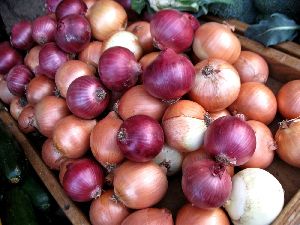
Onions
28 Per Kilogram
The dehydrated onion shall have a colour characteristic of the variety processed. The material, when in the form of powder, shall be free flowing and free from agglomerates
...more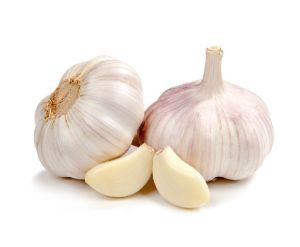
Garlic
40 Per Kilogram
25 Ton (MOQ)
Garlic supplementation is known to boost the function of the immune system. One large 12-week study found that a daily garlic supplement reduced the number of colds by 63% compared with placebo. The average length of cold symptoms was also reduced by 70%, from 5 days in placebo to just 1.5 days in the garlic group. Another study found that a high dose of garlic extract (2.56 grams per day) can reduce the number of days sick with cold or flu by 61%. If you often get colds, then adding garlic to your diet could be incredibly helpful. Calorie for calorie, garlic is incredibly nutritious. A 1 ounce (28 grams) serving of garlic contains (3): Manganese: 23% of the RDA Vitamin B6: 17% of the RDA Vitamin C: 15% of the RDA Selenium: 6% of the RDA Fiber: 0.6 gram Decent amounts of calcium, copper, potassium, phosphorus, iron and vitamin B1 Garlic also contains trace amounts of various other nutrients. In fact, it contains a little bit of almost everything we need. This is coming with 42 calories, with 1.8 grams of protein and 9 grams of carbs.
...more
Long Grain Rice
EXPORT GRADE : The Jasmine rice that mixed with 8% or less other breeds of rice compared by the total weight and Jusmine must be 92% pure call for a common standard for Export or Domestic use. - The average length of the whole kernel without any broken part shall not less than 7.0 mm - Tht ratio of the average length against the average width of the whole kernel witout any broken part shall not be less than 3.0 mm - Long grain class 1 not less than 70.0%, the rest shall be Long grain class 2 - Of all these there may be Long grain class 3 not exceeding 5.0% - Whole kernels not less than 60.0% - Size of Broken having the length >=5.0 =8.0mm - Chalky kernels not exceeding 3.0% - White glutinous rice not exceeding 1.5% - Paddy not exceeding 5 grains per 1 kg. of rice - Extra well milled
...more
white glutinous rice
EXPORT GRADE : The Jasmine rice that mixed with 8% or less other breeds of rice compared by the total weight and Jusmine must be 92% pure call for a common standard for Export or Domestic use. - The average length of the whole kernel without any broken part shall not less than 7.0 mm - Tht ratio of the average length against the average width of the whole kernel witout any broken part shall not be less than 3.0 mm - Long grain class 1 not less than 70.0%, the rest shall be Long grain class 2 - Of all these there may be Long grain class 3 not exceeding 5.0% - Whole kernels not less than 60.0% - Size of Broken having the length >=5.0 =8.0mm - Chalky kernels not exceeding 3.0% - White glutinous rice not exceeding 1.5% - Paddy not exceeding 5 grains per 1 kg. of rice - Extra well milled
...more
Paddy Rice
EXPORT GRADE : The Jasmine rice that mixed with 8% or less other breeds of rice compared by the total weight and Jusmine must be 92% pure call for a common standard for Export or Domestic use. - The average length of the whole kernel without any broken part shall not less than 7.0 mm - Tht ratio of the average length against the average width of the whole kernel witout any broken part shall not be less than 3.0 mm - Long grain class 1 not less than 70.0%, the rest shall be Long grain class 2 - Of all these there may be Long grain class 3 not exceeding 5.0% - Whole kernels not less than 60.0% - Size of Broken having the length >=5.0 =8.0mm - Chalky kernels not exceeding 3.0% - White glutinous rice not exceeding 1.5% - Paddy not exceeding 5 grains per 1 kg. of rice - Extra well milled
...moreBe first to Rate
Rate This